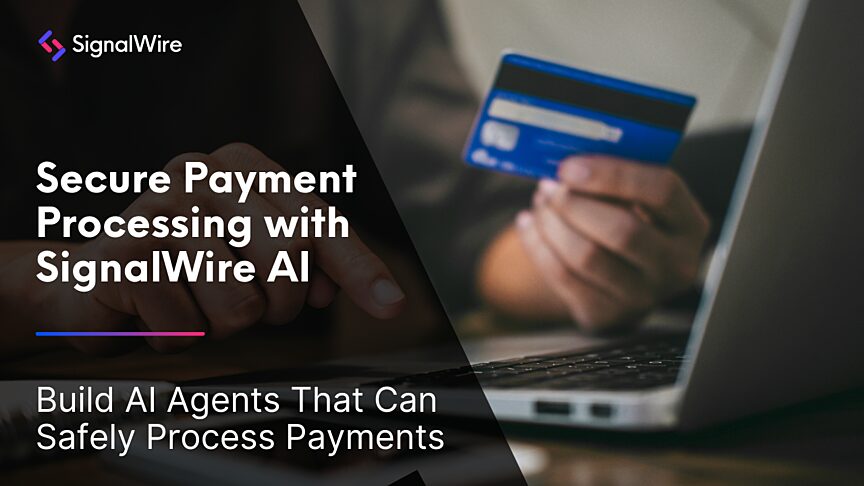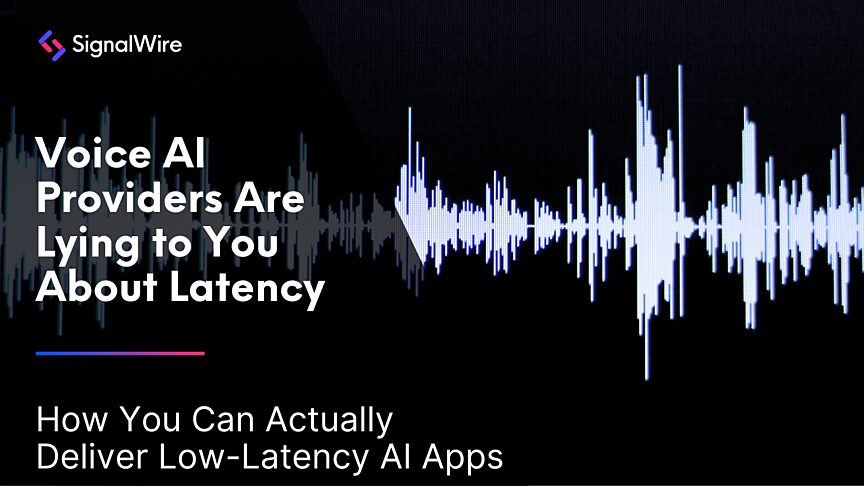Understanding HIPAA Business Associate Agreements for communications services
Compliance isn’t optional when healthcare meets communications technology. Whether you’re building a telehealth platform, managing patient calls in a contact center, or providing cloud-based communication tools for customers who are doing these things, you need to understand what a Business Associate Agreement (BAA) is, and when it applies.
This guide breaks down what BAAs are, when you need one, who doesn’t, what’s in them, and how to implement one effectively (and affordably).
What is a Business Associate Agreement (BAA)?
A Business Associate Agreement (BAA) is a legal contract required under HIPAA (the Health Insurance Portability and Accountability Act) to protect patient data. It defines how a third-party vendor, known as a Business Associate, will handle, protect, and safeguard Protected Health Information (PHI) on behalf of a healthcare organization, known as a Covered Entity.
When software vendors, labs, and other organizations are doing businesses with healthcare providers or insurance companies, a BAA ensures both parties understand and agree to the standards for safeguarding sensitive information.
When do you need a BAA for telecom or contact center applications?
Basically, if your platform creates, receives, maintains, or transmits patient data on behalf of a healthcare customer, from recording calls, routing messages, storing voicemails, or transcribing audio, you need a BAA. A BAA is required any time a vendor creates, receives, maintains, or transmits PHI on behalf of a healthcare entity.
In telecom, this often includes:
Voice recordings of patient calls
Call transcriptions or AI summaries containing PHI
Voicemail storage or chat logs
SMS, MMS, or email communications that include PHI
Analytics or monitoring tools that access conversation content
If your company provides or integrates with systems that store or process any of the above, you’re acting as a Business Associate and must sign a BAA.
Who doesn’t need a BAA?
Some telecom carriers and services are exempt under what’s known as the “Mere Conduit Rule.” A mere conduit is a service provider that only transmits data and does not store or access it, similar to a postal service handling mail without opening the envelope.
You likely don’t need a BAA if:
You’re a traditional phone carrier transmitting calls without storing or inspecting content
You’re providing temporary, encrypted transmission without retention
You’re not processing or analyzing any PHI
However, once you start storing data, even temporarily, you’ve crossed the line into Business Associate territory. The Mere Conduit exception is narrowly interpreted. If your infrastructure retains any copy of PHI, even briefly for quality assurance or routing, you are not considered a mere conduit.
What happens if you don’t have a BAA?
Skipping a BAA when you need one can be catastrophic for both vendors and healthcare organizations.
Legal and financial consequences:
HIPAA fines of thousands or even millions of dollars per violation per year
Civil and criminal penalties for negligent or willful disclosure
Loss of contracts or partnerships with covered entities
Breach notification obligations and potential litigation
Even unintentional violations can trigger audits or investigations by the Office for Civil Rights (OCR).
What’s in a BAA?
A solid BAA outlines the responsibilities of both parties in handling PHI. Common elements include:
Permitted uses and disclosures: How PHI can and cannot be used
Safeguards and security: Administrative, physical, and technical protections
Breach notification: How and when each party must report a security incident
Subcontractor requirements: Ensuring downstream vendors are also compliant
Termination clauses: Conditions for ending the agreement and data return/destruction
Compliance monitoring: Auditing, oversight, and verification terms
If a vendor uses subcontractors (cloud hosting providers, transcription tools, AI processors), those entities must also comply.
How to implement a BAA
1. Identify covered relationships
Map out where PHI flows through your communications ecosystem. Determine which vendors or integrations store or access PHI.
2. Evaluate vendor compliance
Ask for HIPAA compliance documentation and check for encryption, access controls, and breach response plans.
3. Draft and execute the agreement
Use legal counsel or a HIPAA compliance consultant to customize your BAA. The Department of Health and Human Services (HHS) provides a sample BAA template.
4. Train and enforce
Ensure all employees and contractors who handle PHI are trained on HIPAA policies and data handling best practices.
How much does a BAA cost with a typical CCaaS vendor?
Costs vary widely depending on your business model and infrastructure.
In practice, getting a BAA for your contact center or communications platform usually means upgrading to a HIPAA-compliant service tier, which often starts around $2,000 per month. That cost covers the secure infrastructure, auditing, and compliance controls that make the BAA possible.
Usually, there is a minimum monthly spend required as well. It’s important to find a vendor that will work with you, as certain use cases can require thousands of dollars of monthly spend just to be eligible for a BAA.
BAA for HIPAA compliance in telecom and contact centers
As communications move to the cloud and AI becomes embedded in contact center workflows, the lines between technology provider and Business Associate are blurring.
If your platform records, stores, or processes calls that mention patients or their care, even indirectly, you must ensure PHI is handled correctly and your BAA is in place.
FAQ
How does HIPAA apply to telecom infrastructure?
HIPAA regulates how technologies handle PHI. In telecom, that means your compliance obligations depend on data flow and control.
If your system creates, receives, maintains, or transmits PHI, even indirectly (via call recording, voicemail storage, chat logs, or AI processing), you are bound by HIPAA as a Business Associate.
That includes cloud PBX systems, UCaaS and CCaaS platforms, IVRs, and AI-powered transcription or analytics tools.
So even if your platform isn’t marketed as healthcare software, if it processes patient data for a healthcare client, HIPAA applies.
What makes telecom vendors different from other HIPAA Business Associates?
Communications services handle real-time, unstructured PHI conversations, recordings, SMS messages, video feeds, etc. This introduces unique risks:
Voice packets and chat sessions can become PHI the moment they’re recorded, transcribed, or analyzed.
Many contact centers rely on APIs or third-party storage. Each integration creates a new compliance surface area.
Cloud-based systems must isolate PHI securely between customers.
That’s why HIPAA in telecom goes beyond encryption to require secure architecture, role-based access, and contractual accountability across your entire communications stack.
How do call recording, transcription, and AI affect HIPAA compliance?
Every added layer of functionality increases your exposure to PHI.
Call recording: The moment a patient’s name, diagnosis, or billing info is captured, that file becomes PHI and must be encrypted, access-controlled, and auditable.
Transcription and AI summarization: These generate new forms of PHI (text and metadata). You must ensure the transcription and AI vendors are under BAAs too.
Analytics and QA monitoring: If analytics tools or supervisors can access PHI, the system must include proper authorization and tracking.
AI systems can make compliance harder because they may cache or reuse data, which is why data isolation and stateless AI architecture are becoming best practices in healthcare communications.
How should PHI be stored and transmitted?
The HIPAA Security Rule requires three layers of safeguards:
Administrative: Policies, access logs, training, incident response plans
Physical: Secure facilities, device management, restricted access
Technical: Encryption, multifactor authentication, least-privilege access, and audit trails
In telecom, this often translates to:
Encrypted SIP signaling and media
Secure API tokens and TLS connections for voice/video
Limited call log retention and automated PHI deletion
Isolated storage for healthcare accounts
How often should BAAs be reviewed or updated?
Best practice is to review BAAs every 12–24 months, or whenever:
You change vendors or hosting environments
You add new services that process PHI (transcription, AI analytics)
Regulations or state laws update
BAAs are living documents. Compliance isn’t static, and your agreement should evolve with your infrastructure.
How can you streamline HIPAA compliance with communications software providers?
Compliance is easier and less expensive when your communications ecosystem is consolidated, well-documented, and purposefully designed. Here’s how to simplify your HIPAA compliance strategy:
Choose a vendor that covers multiple communication channels.
Reduce your vendor footprint by selecting a platform that supports voice, video, messaging, fax, and AI under one roof. Fewer integrations mean fewer data handoffs, fewer BAAs to manage, and less exposure to risk.Use HIPAA-compliant infrastructure.
Ensure your provider runs on a secure, audited environment with encryption, access controls, and breach response processes aligned with HIPAA and SOC 2 standards.Implement access control and auditing for all PHI endpoints.
Every user, API, and integration should be authenticated and logged to provide traceability across your environment.Segment healthcare traffic from general-use systems.
Isolate healthcare communications and apply stricter access and retention policies to PHI-bearing data.Automate data minimization.
Delete recordings, transcripts, and logs containing PHI once they’ve served their purpose. Automating this process reduces manual risk and improves audit readiness.Provide clear documentation to healthcare clients about your compliance scope.
Transparency builds trust. Outline what your platform covers, how PHI is secured, and what responsibilities fall to your customers.
Does SignalWire offer BAAs?
Yes. SignalWire offers BAAs to customers who require HIPAA-compliant communications at a fraction of the price of other vendors. Monthly costs are only $1000 with a 12-month commit.
Because SignalWire’s Call Fabric is stateless and designed for low-latency, privacy-first processing, customers can integrate recording, transcription, or AI workflows while maintaining compliance boundaries. And you can use SignalWire across voice, video, messaging, fax, and AI for a true omnichannel experience while reducing vendor sprawl.
Contact the experts at SignalWire today to request a Business Associate Agreement for your organization.


